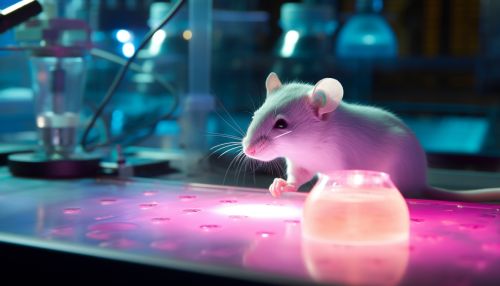Advances in Bioluminescent Imaging for Medical Research
Introduction
Bioluminescent imaging (BLI) is a non-invasive imaging technique that uses light produced by a chemical reaction within an organism. It has become an increasingly important tool in medical research, particularly in the field of molecular biology. This technique allows for the visualization of cellular and molecular processes within living organisms in real time. This article will delve into the advances in bioluminescent imaging for medical research.
Principle of Bioluminescent Imaging
Bioluminescent imaging is based on the detection of light emitted from living cells or organisms that have been genetically modified to express a bioluminescent gene. The most commonly used gene is the firefly luciferase gene, which produces a light-emitting enzyme when it reacts with its substrate, luciferin. The emitted light can be detected and quantified using a sensitive camera system, providing a direct measure of the biological process under study.
Advances in Bioluminescent Imaging
Over the past few decades, there have been significant advances in bioluminescent imaging technology. These advancements have greatly improved the sensitivity, resolution, and depth penetration of the imaging, allowing for more detailed and accurate observations.
Improved Sensitivity
One of the major advancements in bioluminescent imaging is the improvement in sensitivity. This has been achieved through the development of new bioluminescent reporters and substrates with higher light output. For example, the development of new luciferase enzymes, such as NanoLuc, has resulted in a 150-fold increase in light output compared to the traditional firefly luciferase. This increased sensitivity allows for the detection of lower levels of biological activity, improving the ability to detect and monitor disease progression.


Increased Resolution
Another significant advancement is the increase in spatial resolution. This has been made possible through the development of advanced camera systems with higher pixel density. These systems allow for the capture of more detailed images, enabling the visualization of smaller structures and processes within the organism. Additionally, the development of tomographic reconstruction algorithms has allowed for the three-dimensional reconstruction of the bioluminescent source, providing more detailed information about the location and size of the biological process under study.
Improved Depth Penetration
The depth penetration of bioluminescent imaging has also been significantly improved. This has been achieved through the use of near-infrared bioluminescent reporters, which emit light at wavelengths that are less absorbed by biological tissues. This allows for the imaging of deeper tissues, expanding the range of applications for bioluminescent imaging in medical research.
Applications in Medical Research
The advances in bioluminescent imaging have expanded its applications in medical research. Some of these applications include the study of disease progression, drug efficacy, and gene expression.
Disease Progression
Bioluminescent imaging is commonly used to study the progression of diseases, particularly in cancer research. By genetically modifying cancer cells to express a bioluminescent gene, researchers can visualize the growth and spread of the cancer in real time. This provides valuable information about the biology of the cancer and can aid in the development of new treatments.
Drug Efficacy
Another important application of bioluminescent imaging is in the evaluation of drug efficacy. By monitoring the bioluminescence signal, researchers can determine the effect of a drug on the biological process under study. This can provide valuable information about the drug's mechanism of action and its potential therapeutic effects.
Gene Expression
Bioluminescent imaging is also used to study gene expression. By linking the bioluminescent gene to a gene of interest, researchers can visualize when and where the gene is expressed within the organism. This can provide valuable insights into the function of the gene and its role in disease.
Conclusion
The advances in bioluminescent imaging have greatly improved its utility in medical research. The increased sensitivity, resolution, and depth penetration have allowed for more detailed and accurate observations, expanding the range of applications for this imaging technique. As technology continues to advance, it is expected that bioluminescent imaging will continue to play a critical role in our understanding of biology and disease.
